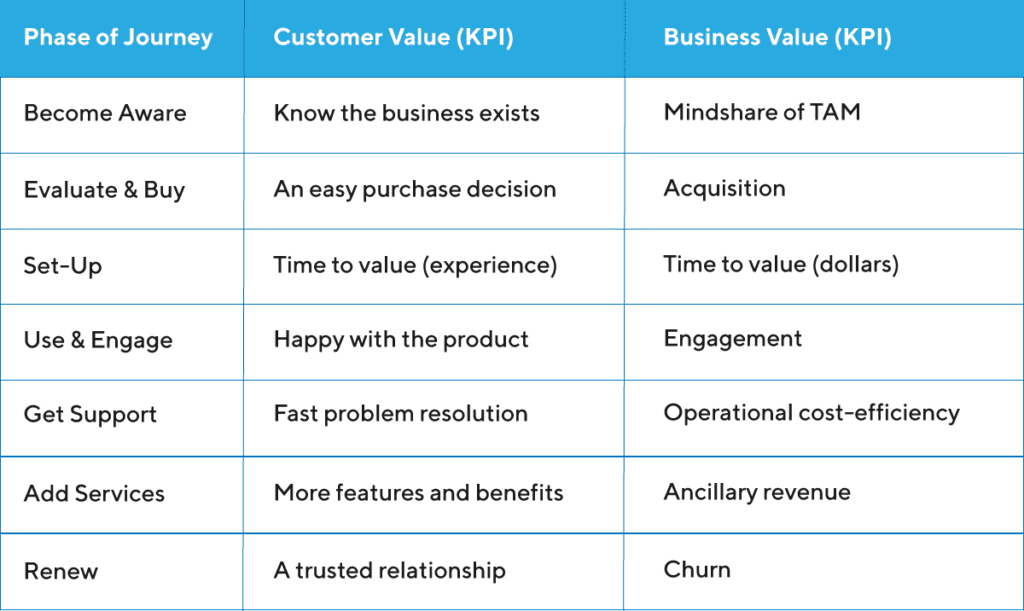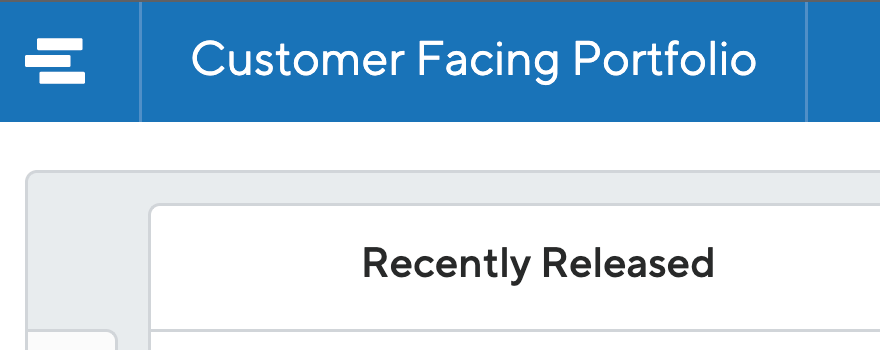Much has been written over the last few years on the idea of the featureless roadmap, which challenges product teams to present their plans grounded more in strategic vision – or by themes – rather than a laundry list of specific features. ProductPlan alone has several articles on the subject that demonstrate the many virtues of this outcome-focused approach. It’s becoming more and more widely adopted by Product Management organizations across the globe.
One of the critical considerations in developing your theme framework is to ask what drives the need for this theme? There is a genuine risk that a well-meaning product manager might simply group and categorize the existing feature list as a means for determining the theme. However, the real goal of the themed roadmap is to let the desired outcomes define the features. So how do you zero in on the most meaningful outcomes from which to center your roadmap themes around?
How to Decide on Roadmap Themes that Produce Meaningful Outcomes
I’ve seen several different approaches, including themes that align with high-level business goals (acquisition, growth, customer satisfaction, etc.) or more granular focus areas like the example in Jim Semick’s article of increasing satisfaction within a user persona group. There are pros and cons to each of these approaches. For example, the business goals approach is static over time, so the themes themselves stay consistent and maintain a pulse on the longer view. But the themes in and of themselves are a bit uninspiring and don’t do much to communicate customer value. In the more granular approach, the focus is more laser-sharp and centered on a specific customer outcome. However, this approach runs the risk of myopia and losing sight of new emergent opportunities that might outweigh the theme’s value.
A compelling theme should be centered on the exchange of value between the business and the customer, and the above examples are hyper-focused on one or the other.
One way to achieve this balance is to organize your roadmap themes by each phase of the customer journey. This customer journey approach provides a widely universal framework for both business and customer outcomes and promotes a constant, bird-eye perspective on the end-to-end customer experience.
The Customer Journey Framework
The customer journey chronicles every customer interaction and touchpoint with your business—from becoming aware that you exist to making a purchase decision, using, and then eventually renewing with your product or service. The journey is depicted in different phases, which are relatively universal (but might be customized by a business that has done the work to map their customers’ journey). Those phases include Become Aware, Evaluate and Buy, Set Up, Happily Use, Get Support, Add Services, and Renew.
![]()
The Benefits of Defining Product Themes by Customer Journey Phases
Breaking down the customer’s end-to-end journey is a highly effective framework that enables an outside-in perspective and customer empathy as a means to drive value that is reciprocal to both customer and the business:

Journey maps, then, are highly applicable to the goal of defining product roadmap themes since successful customer outcomes are at the heart of each phase. Besides the apparent value exchange, the customer journey is a universal perspective that transcends organizational silos. Each phase of the journey has pretty clear stakeholders, for example, generating awareness is usually assigned to the marketing team, and the customer success department usually owns the support experience. Focusing your themes on phases of the customer journey enables stronger partnerships between the product team and other functional groups because their goals become less disparate from the product strategy. It changes the conversation from other departments vying for a slot on the product roadmap to one that is much more strategic. Both groups can become collaboratively responsible for goal setting within the shared theme.
Another benefit of the journey-based roadmap themes is that it inherently promotes customer empathy. Everyone in the company who looks at your product roadmap can evaluate it, not from just a customer perspective, but a timeline-based customer perspective. The customer journey enables individuals and teams to consider the context of their work within the customer’s end-to-end experience. Leading with this genuine care, curiosity, and perspective of the customer can have profound cultural effects on a business. Customer-centered cultures foster a bottom-up drive for innovation based on the desire to solve customer problems creatively.
Problems are fluid, and markets are changing rapidly, so the work of a product manager to effectively prioritize work is a constant challenge effectively. Choosing the right theme altitude is critical to keeping eyes and ears open for emerging opportunities outside of the current focus areas. I like using customer journey phases as themes because, while customer needs may fluctuate, their journey stages are static. Maintaining consistency and continuity in themes provides a clearly defined lens from which to scan the customers, trends, and competition.

Customer Journey Roadmap Themes in Practice
Let’s look at some tangible examples of how each theme may be planned and presented from the perspective of a fictitious e-commerce platform company.
Phase 1: Become aware

Prospects know our product exists, and it has a positive reputation.
Generating awareness includes all of the things your marketing department is doing to reach new prospective customers. In this example, the product and marketing teams establish a mission to grow the reputation of the business by addressing issues raised by contributors to software review sites and focusing on a specific feature and usability gaps common among the less-favorable reviews.
CUSTOMER KPI: Reach
BUSINESS KPI: Reach as a % of Total Addressable Market (TAM)
STAKEHOLDER PARTNER: Marketing
Phase 2: Evaluate & buy

Make it easy for prospects to choose and purchase our product.
Reducing friction between a prospect and their willingness to buy is a key concern for sales and product management teams. Having a theme dedicated to this experience drives constant focus in this crucial area, like in this example, where the goal is to reduce sales objections by adding the top payment options prospects are demanding.
CUSTOMER KPI: Time to deal close
BUSINESS KPI: Maps to sales booking goals
STAKEHOLDER PARTNER: Sales
Phase 3: Set-up

New customers can take immediate advantage of our product.
Product onboarding encompasses all the activities a customer or user engages in to configure, learn, and start using a product. In this example, the teams at our e-commerce platform are working on ways to do just that by introducing two new, self-guided onboarding flows within the product.
CUSTOMER KPI: Time to the first use of the critical feature
BUSINESS KPI: Time to goal monthly recurring revenue (MRR)
STAKEHOLDER PARTNER: Customer Success and/or Onboarding Teams
Phase 4: Happily use

Customers get so much value from using the product, and they love it!
Naturally, the phase focused on product use is how much of mainstream product management is currently categorizing their work. Given the above examples, one can begin to ascertain the benefits of instead capturing work in terms of the different outcomes defined by the customer journey. Keeping the outcome of this theme narrowly focused on adding value makes it an excellent space for prioritizing feature requests of current customers, usability improvements, addressing technical debt, and, as in this example, improving product engagement of a specific feature set.
CUSTOMER KPI: Transactional Net Promoter Score (tNPS), System Usability Score (SUS)
BUSINESS KPI: Critical engagement metrics
STAKEHOLDER PARTNER: Product Development (Product, UX, & Engineering)
Phase 5: Get support

Customers rarely need help, but when problems arise, they are quickly solved.
The support phase is focused on making support resources easily accessible, improving resolution speed, building out various support channels, and reducing the need for support in the first place. The product team can have a significant impact on this outcome by doing this, like implementing an in-product support experience or, as in the example below, dedicating focus to address the top product case drivers.
CUSTOMER KPI: Transactional Net Promoter Score (tNPS), Time to case resolution
BUSINESS KPI: Tracking against operational cost efficiencies
STAKEHOLDER PARTNER: Customer Support
Phase 6: Add services

Customers are compelled to upgrade and subscribe to value-add services.
The heart of the add services phase is in upgrades, upselling, and the purchase of additional products and services, all tied to a business’s growth initiatives. This theme can capture things like improving the discoverability of value-add services, adding features to be repackaged as a new subscription tier, or, as in this example, building out new features or services that customers would be willing to pay extra for.
CUSTOMER KPI: Reach/Conversion
BUSINESS KPI: Average Revenue per Unit (ARPU)
STAKEHOLDER PARTNER: Customer Success and/or Sales
Phase 7: Renew

Customers remain loyal advocates of our product and business.
The renew phase looks at every opportunity to keep customers happy coming back to your product or service. Almost all SaaS businesses are looking at churn, and addressing those reasons is perhaps the most apparent epic under this theme. But, similar to some of the other themes, there may be opportunities to reduce effort by integrating account management experiences within the product, such as this example that would introduce a renewal flow and add the ability for SaaS customers to pay their invoice online (instead of sending a check).
CUSTOMER KPI: Net Promoter Score, Customer Satisfaction (CSAT) scores
BUSINESS KPI: Churn
STAKEHOLDER PARTNER: Customer Success
Considerations for Journey-Focused Roadmap Themes
A highlighted benefit of having high-level themes that align with phases of the customer journey is that the themes are universally applicable across every department of the business. Sharing goals across business functions create a substantial competitive advantage for consistently delivering high-value, end-to-end experiences. There are, however, some aspects of this approach to be mindful of, which include:
- Avoid creating silos by phase. People and tactics may be focused on a specific phase. However, Product and Design need to maintain their awareness of their work’s context within the end-to-end journey.
- Phases require prioritization. While I advocate for having the same consistent themes, I don’t believe that work needs always to be happening equally within each. Certain phases will have a greater need than others. It’s up to the product team to appropriately allocate focus where the greatest needs are.
- Phases often have embedded journeys of their own. This is especially true for the Add Services phase, where there is a complete cycle of awareness to renew to consider.
Keeping customer outcomes at the heart of your roadmap, effectively mapping them to business outcomes, and sharing those outcomes across your organization is an excellent recipe for driving innovation and building reciprocal value between your customers and your business. The phases of the customer journey already have this value exchange baked-in. They can be a highly effective lens through which to view and prioritize the opportunities on your product roadmap.





